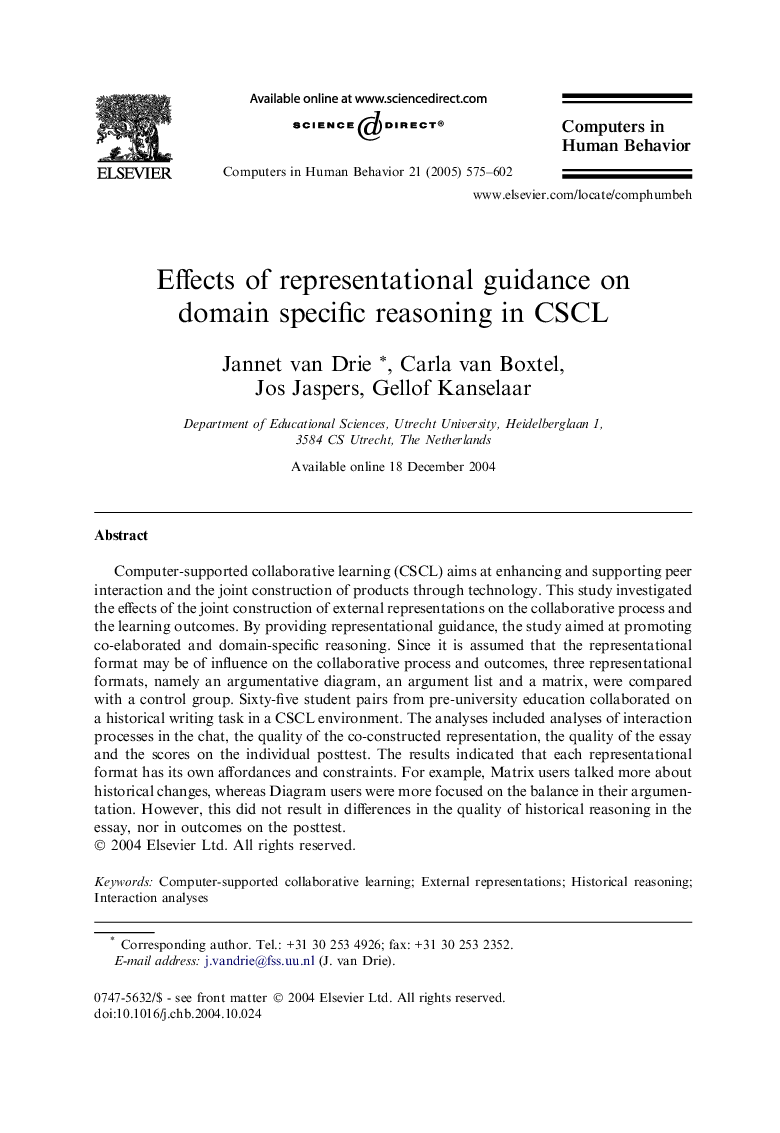| Article ID | Journal | Published Year | Pages | File Type |
|---|---|---|---|---|
| 10312758 | Computers in Human Behavior | 2005 | 28 Pages |
Abstract
Computer-supported collaborative learning (CSCL) aims at enhancing and supporting peer interaction and the joint construction of products through technology. This study investigated the effects of the joint construction of external representations on the collaborative process and the learning outcomes. By providing representational guidance, the study aimed at promoting co-elaborated and domain-specific reasoning. Since it is assumed that the representational format may be of influence on the collaborative process and outcomes, three representational formats, namely an argumentative diagram, an argument list and a matrix, were compared with a control group. Sixty-five student pairs from pre-university education collaborated on a historical writing task in a CSCL environment. The analyses included analyses of interaction processes in the chat, the quality of the co-constructed representation, the quality of the essay and the scores on the individual posttest. The results indicated that each representational format has its own affordances and constraints. For example, Matrix users talked more about historical changes, whereas Diagram users were more focused on the balance in their argumentation. However, this did not result in differences in the quality of historical reasoning in the essay, nor in outcomes on the posttest.
Related Topics
Physical Sciences and Engineering
Computer Science
Computer Science Applications
Authors
Jannet van Drie, Carla van Boxtel, Jos Jaspers, Gellof Kanselaar,
